A couple of weeks ago, I went to explore the disused Down Street tube station in Mayfair. Down Street is on a side road between Green Park and Hyde Park Corner, and the Piccadilly Line served this station. The station was not open for very long. It was opened in 1907 and shut its doors in 1932 due to lack of use. Its placement here was controversial because many people that lived in the area did not use public transport. Although it was closed in 1932, it had a new lease of life in 1939 as a secret headquarters for the railway board executivies during World War II. It is often referred to as "Churchill's Secret Bunker". The staff at TFL (Transport for London) are continuously researching and discovering how the station was used during the war times, but most of the government secrets are off limits currently and won't be accessibly by the public until 2040.
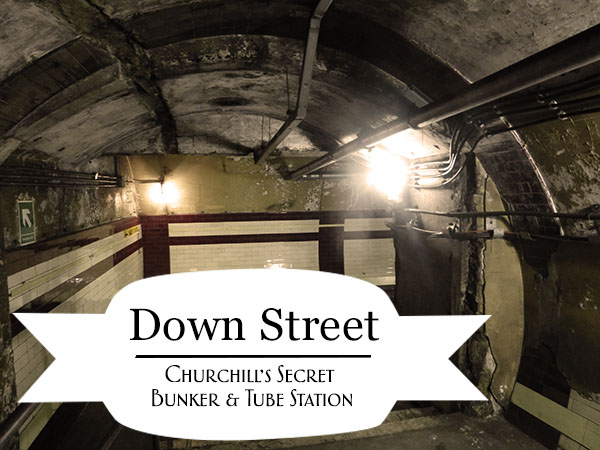
The tube station is easy to notice because of its glossy tiles that identify it; in Down Street's case, the tiles are dark red. The large arched windows and wide doorways also identify it as a tube station, although one of the doorways has been bricked over while the other is home to a small shop.
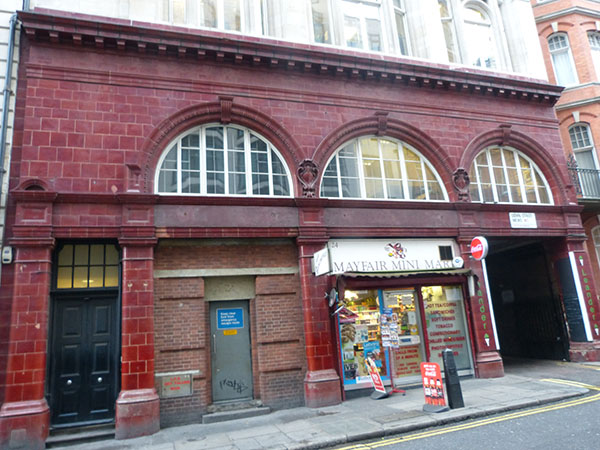
Upon arriving on the train/platform level, we were told about the station's use during World War II. The first bit of tunnel was sectioned off and became the area for typists. The walls were painted a mustard yellow colour, and we could see where the floor was levelled and the partition wall was added on one side. The side with the partition wall formed a room with an aisle down one side. The aisle was just large enough for a tea trolley (or a person to walk single-file). On this wall, there are directions to the Enquries and Committee Room, and there's "Way Out" signs in the same style on other walls. Before the room was a gas seal-off door, and there were several of these throughout the station. The rooms were all purpose-made, and the public was not aware of the secret bunker here.
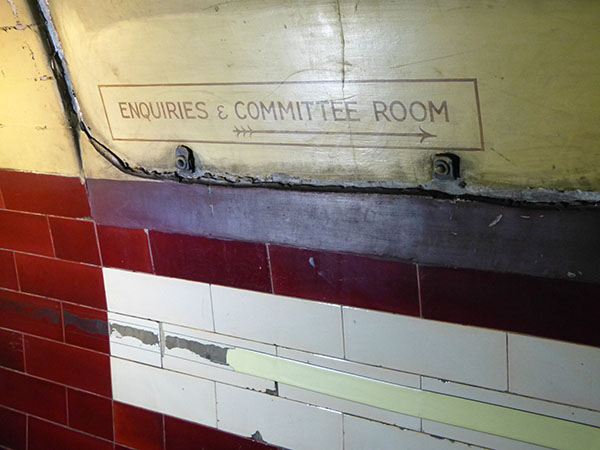
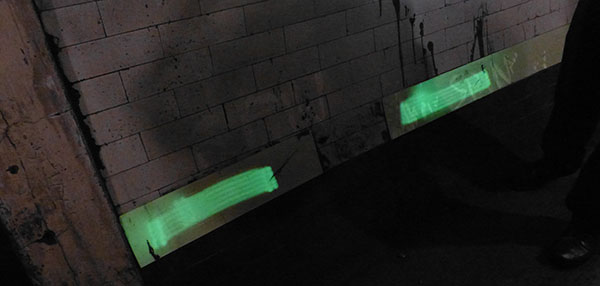
We were also shown the glow-in-the-dark strips along the lower part of the tunnel walls, which enable visitors to find their way in case the electricity is off.
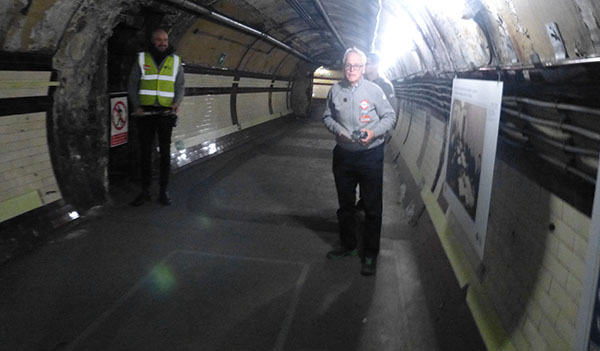
The next tunnel was also divided into rooms: offices and the committee room. One of the rooms here was where Churchill stayed during bombing raids. Throughout our tour, we were shown photographs on the wall of people inside these rooms, and we could identify where walls, lights, and clocks had been attached. In the photograph above, the placement of the table in the photograph is outlined on the floor. The aisleway would have been to the left, and the flooring also demonstrates how the rooms were broken up.
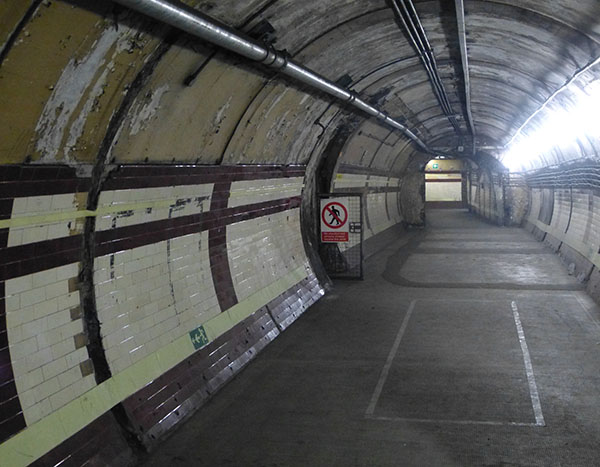
Off of the meeting room, we were shown the toilets and bath facilities, which were located through a door that went up a staircase. These separate rooms were divided up with the facilities. Apparently the women had to kick up a fuss to have separate facilities. The furnishings were also top of the range. The next few photographs shows some of these rooms and what remains.
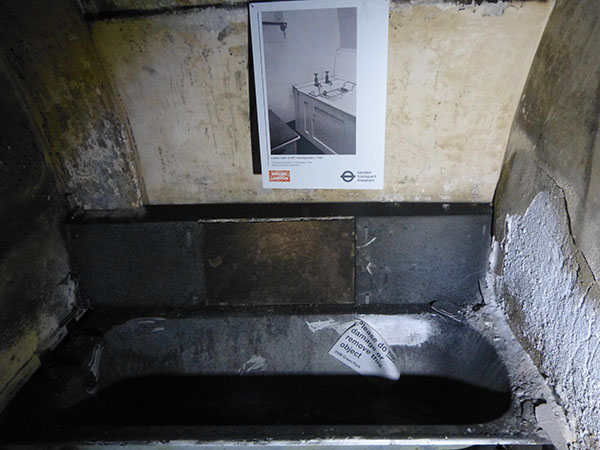
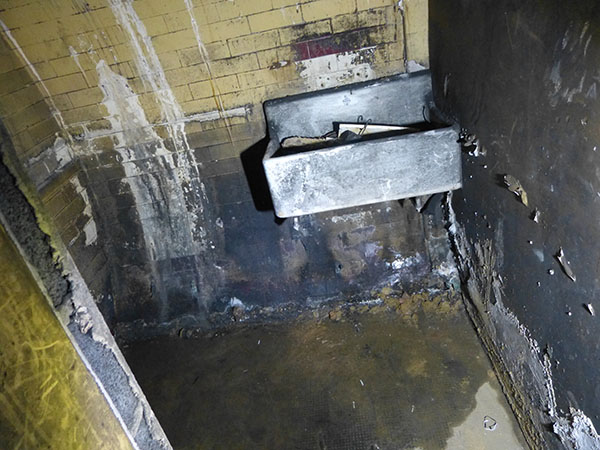
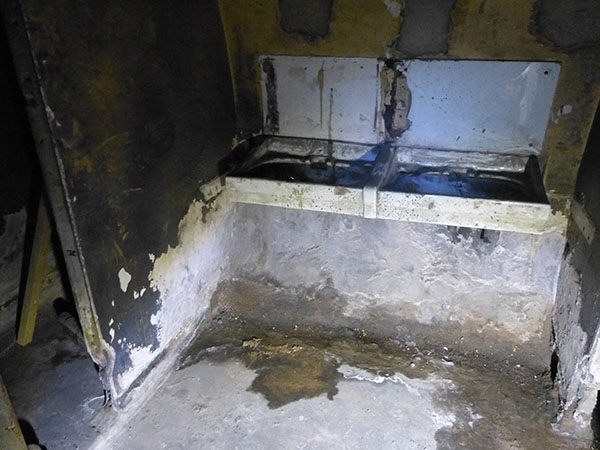

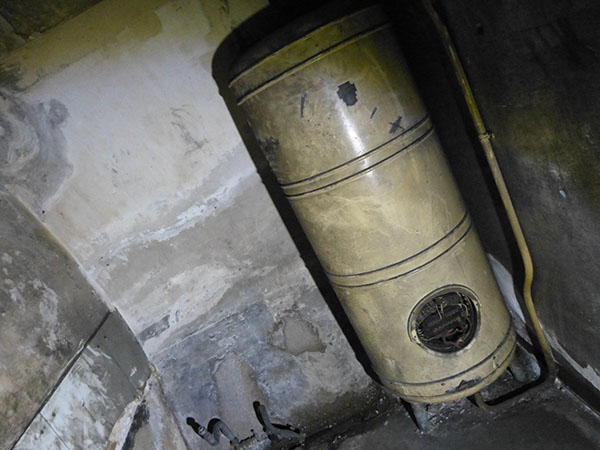
Further down the hallway, we came to the section where we could see the tube train passing between Green Park and Hyde Park Corner on the Piccadilly Line. There were sections throughout the remainder of the tour where we could see the trains, separated by just a thin wall. We continued until we branched off into a separate tunnel where the exchange and switch board are located. These were located in two separate rooms.
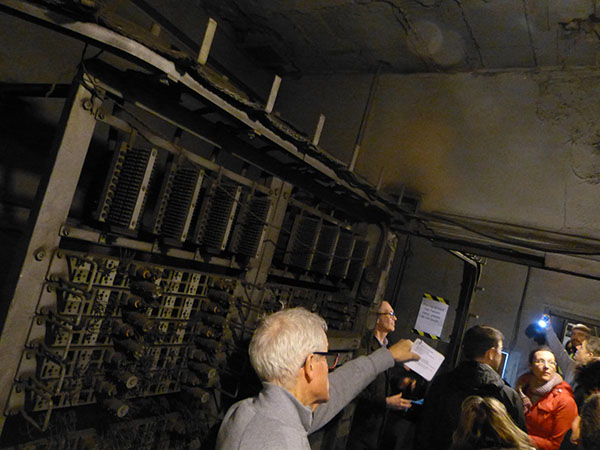
The switch board has fine wooden panel, which we could see by shining a light to it.
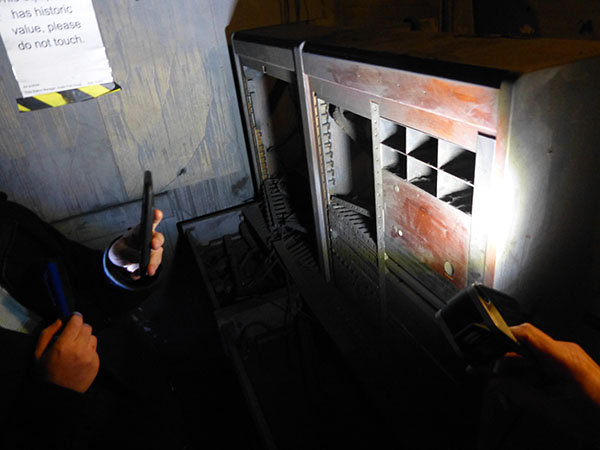
Opposite the switchboard is old-style tiling forming a very Art-Deco "Way Out" sign.
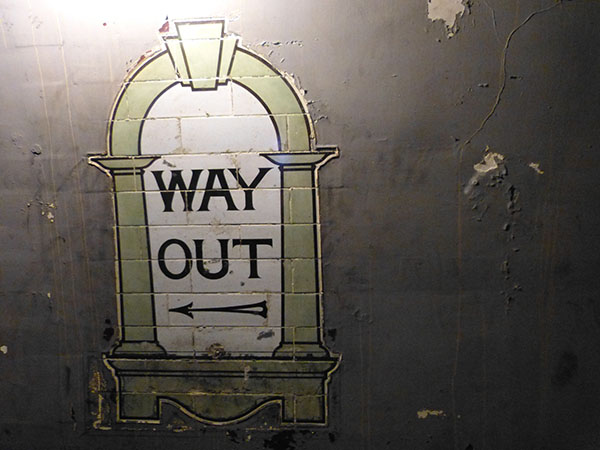
We arrived at further rooms that were used by the executives. Some of these included the original lighting. Many of these rooms were painted grey over the mustard yellow. Someone suggested they may have been painted for preparations on tube evacuation teams or filming a submarine movie.

A map of the layout of the rooms is also present.
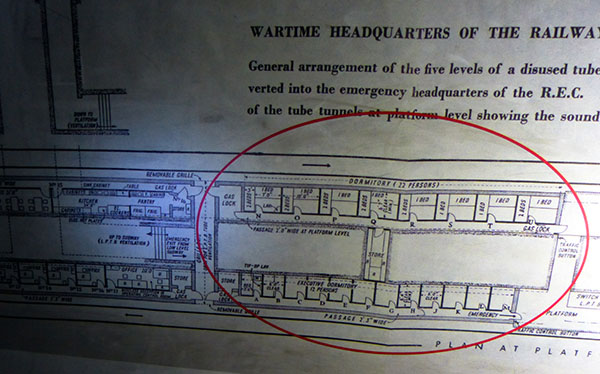
We were shown the executive rooms and the bedrooms, and we could see which rooms were fancier because they had wallpaper. After this, we were shown the kitchen and dining area.
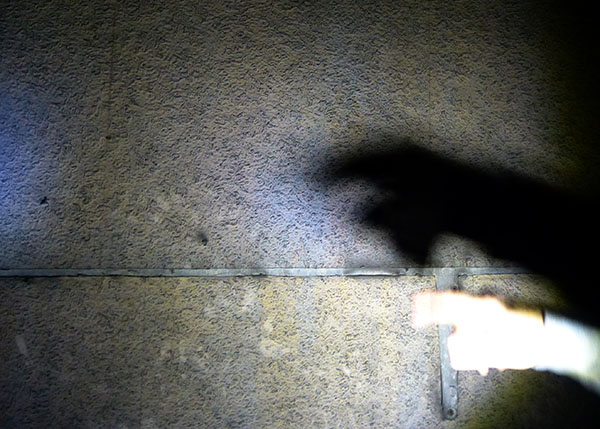
The new development and research suggests that the last part of the tour is exciting because it's the area at the back (by the air flow) that Churchill had asked to be purposed into his area. Rooms were created here with a toilet near the top of the step and a room on the left. The room had a phone line that went direct to the USA. They're not exactly sure who used these rooms, but it is clear that they are used by VIPs. A picture of the room is below, but there's actually another similar bricked-up wall a few steps down the tunnel. It's completely bricked up, but it probably has some significance.
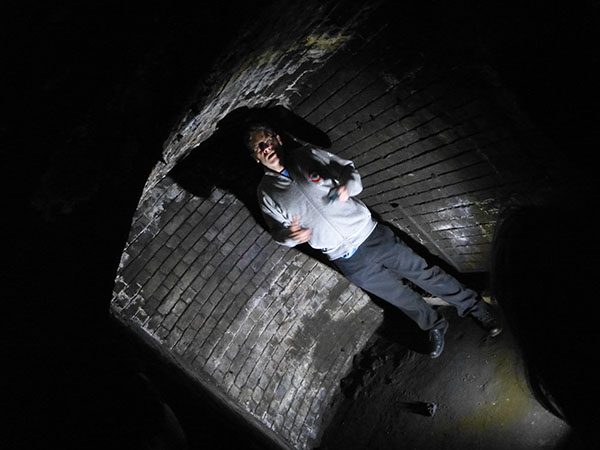
On the other side of this area, we saw more yellow paint, and this is covering the original signage. "To The Trains" can be seen beneath the layer of paint.
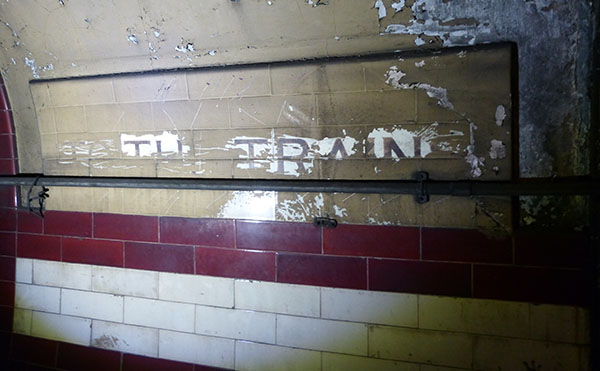
Also, the original signage showing the platform directions can also be seen here. Finsbury Park points to the left, and Hammersmith points to the right. Unfortunately, someone ruined the wall and lettering when they installed some ladders and pipework over the top of it.
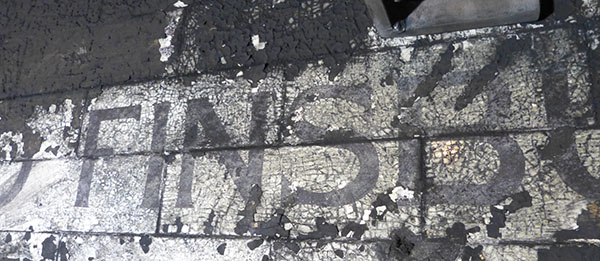
Next, we saw the lift shaft. My photographs did not come out because there was not enough room to see, and the lighting was not bright enough. On the other side of the lift shaft was the tile manufacturer name Simpson & Sons, who created the tiles. This is a rare find.
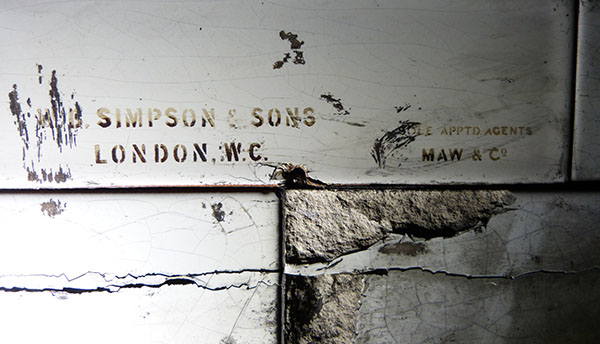
Out of the lifts, the commuters would have been directed to the trains via this "To the Trains" sign.
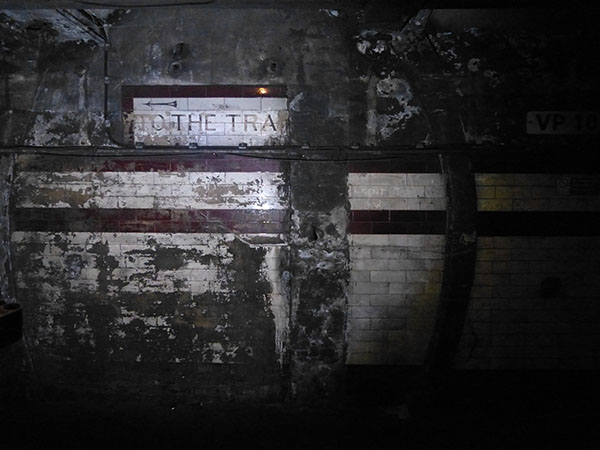
On street level, we received a booklet with more information about Down Street station.
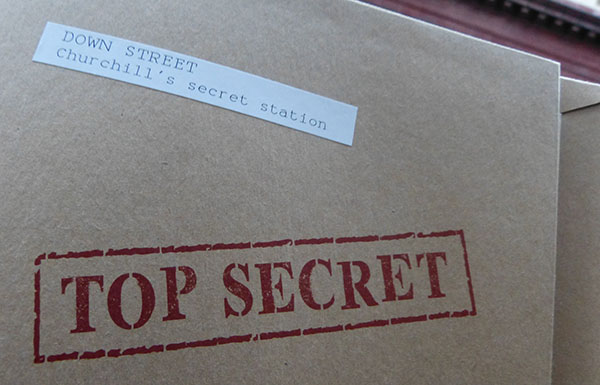
I would love to know more about this station and the history of it as it seems that there's still so much more to know that cannot become the public domain until 100 years are up. Unfortunately, by that time, the people who did work in the tunnels would no longer be able to talk about them.
For readers who have enjoyed this post, I have also visited additional disused and abandoned underground stations in London. I also have a couple of more trips to visit other ones coming up, so be sure to keep following me. Below are previous posts:
Paddock World War 2 Bunker
Aldwych Station
Euston Station Tunnels
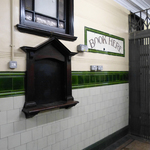

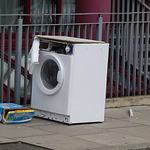
Leave a comment